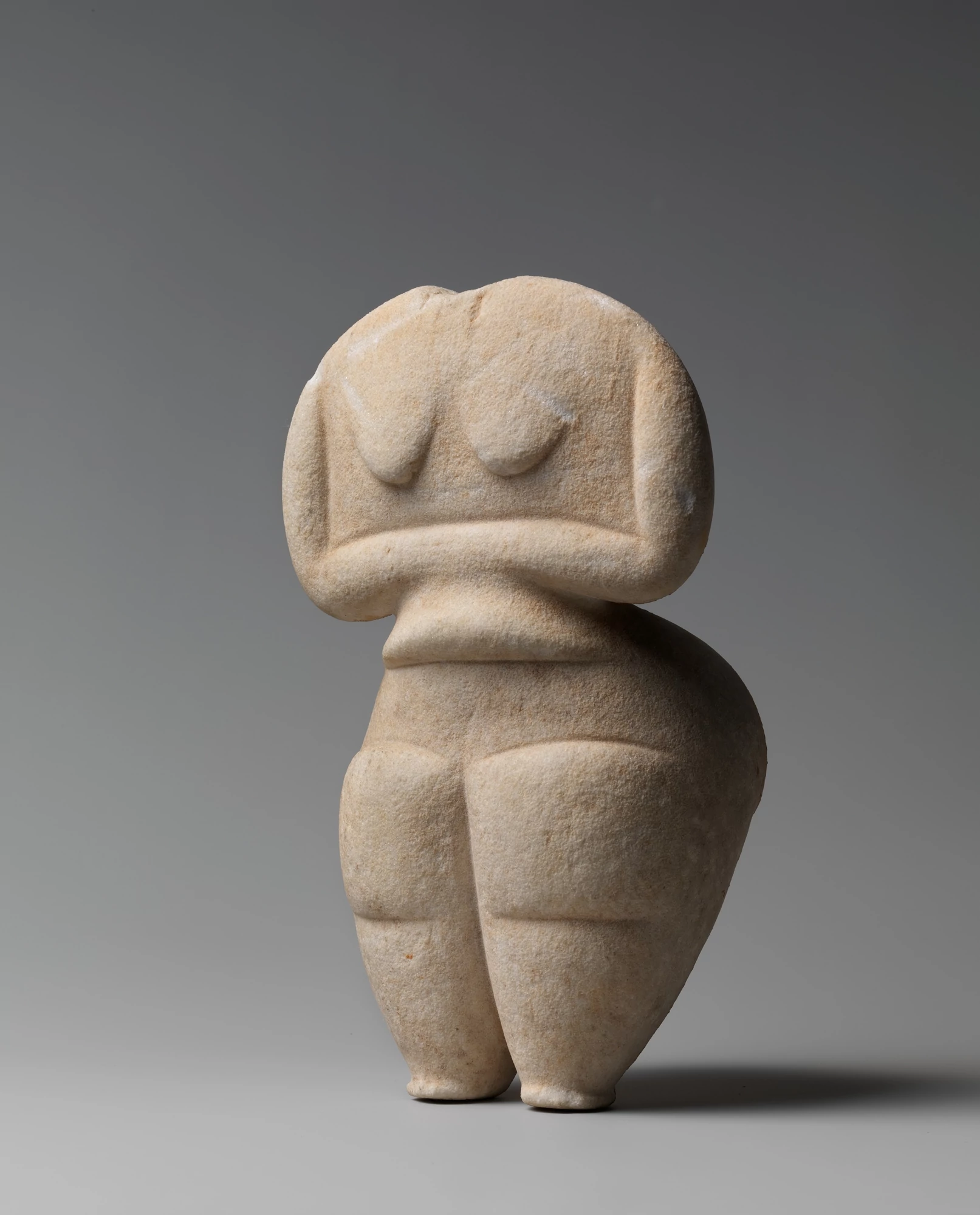
Female figure 4500 – 4000BCE

Cycladic Figure 2800BCE

Early Cycladic female figure 3200 – 2800BCE

Cycladic seated harp player 2800 – 2700BCE

Cycladic female figure 2300 – 2200BCE

Moschophoros (calf-bearer) 560BCE

Peplos Kore 530BCE

Warrior of Capestrano 500BCE

Statue of a Youth, "Kritios Boy" 480BCE

Head of Plato 370BCE

Dying Gaul 250BCE

Laocoön and His Sons 200BCE

Philosopher 200BCE

Athena 100BCE
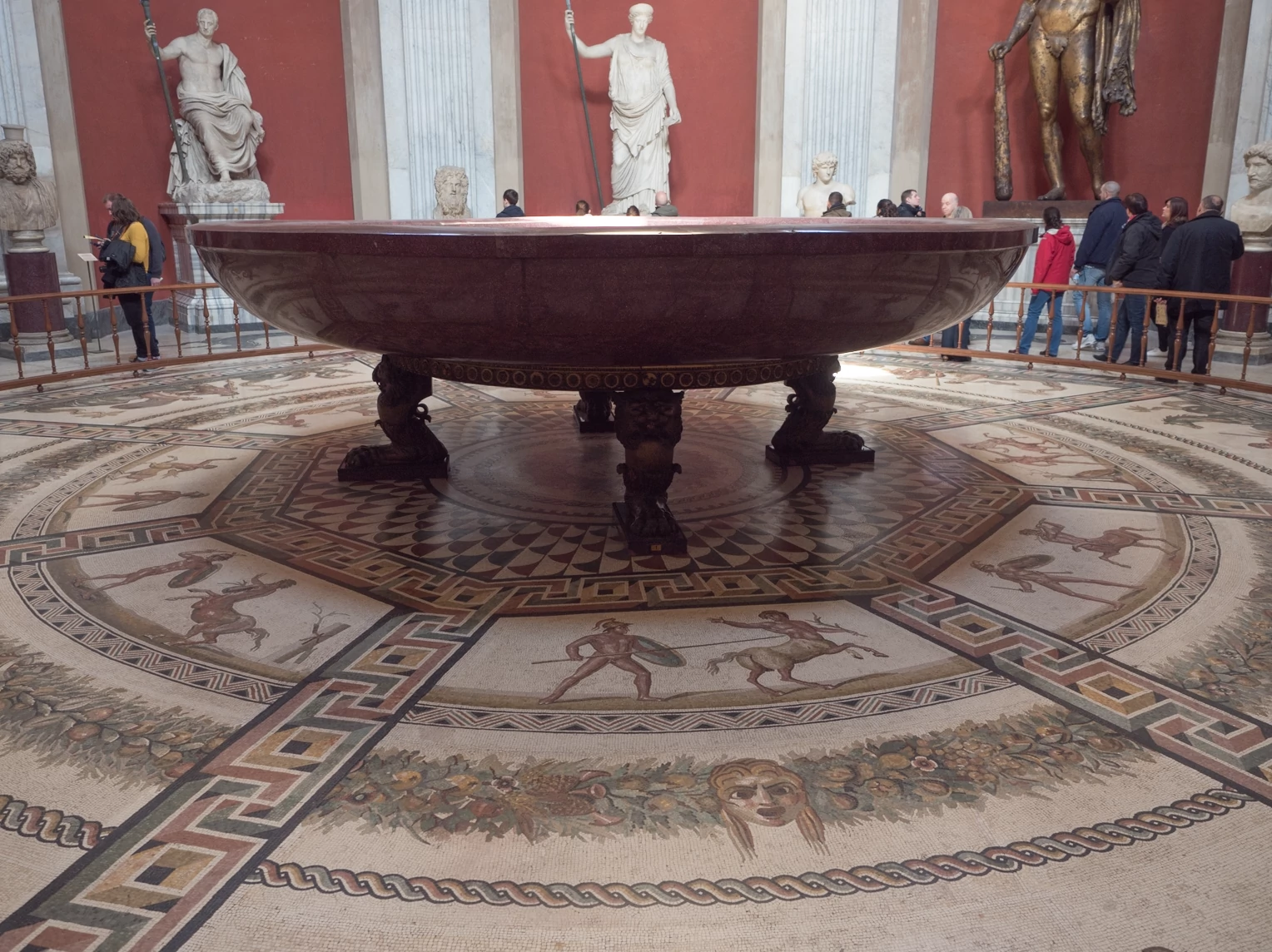
Nero's Bath 64CE

Young Hercules 69 – 96CE

Portrait of Aristotle 100CE

Statue of Aphrodite 100CE

The Braschi Antinous 138CE

Emperor Antoninus Pius 138 – 161CE

Apollo Seated With Lyre 200CE
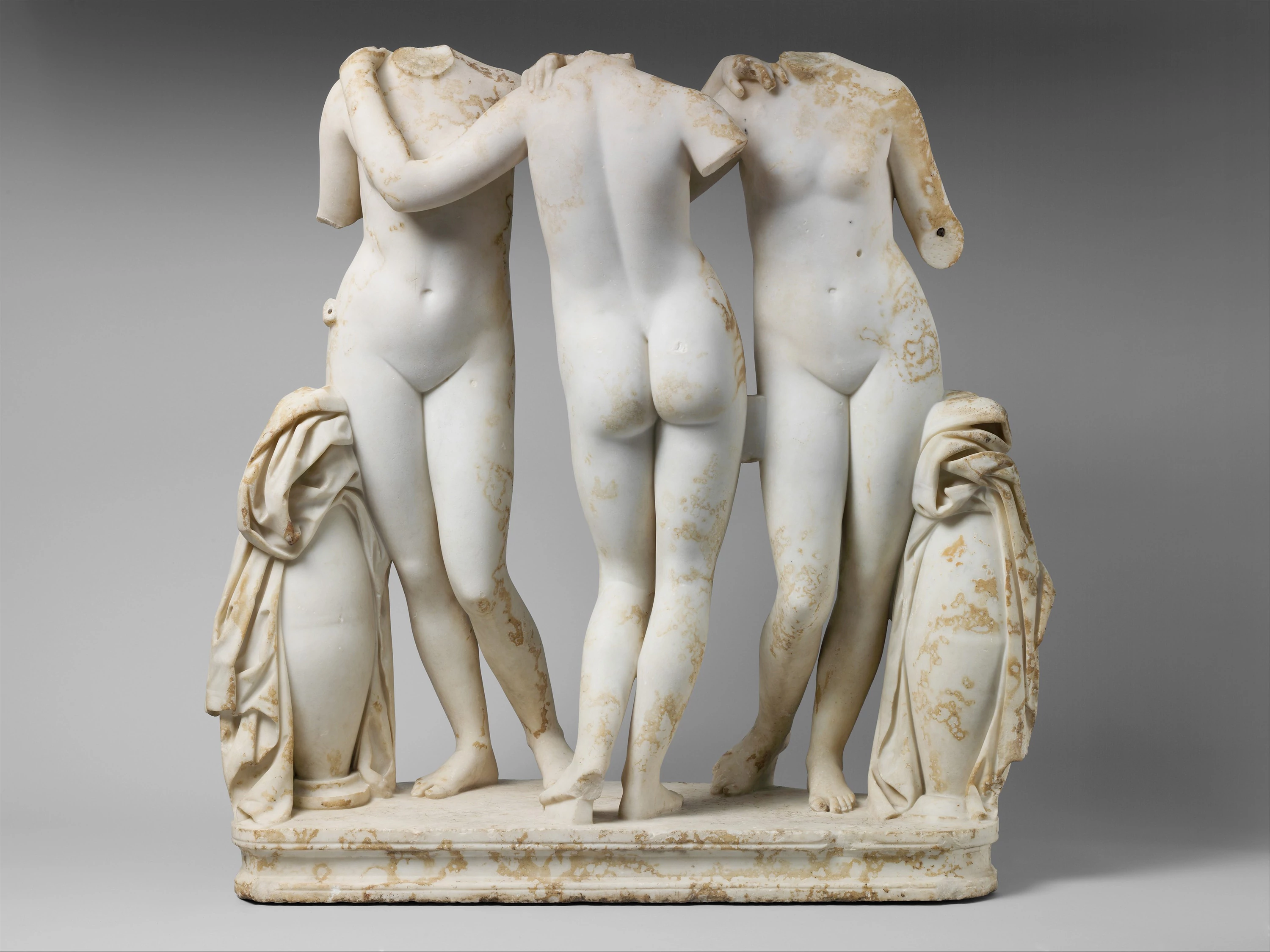
The Three Graces 200CE

Daughter of Mousaios, Funerary Stele 250CE

Kneeling Male Attendant 921 – 945CE

St. Mark Donatello, 1411

St. John the Evangelist Donatello, 1408 – 1415

Saint George Donatello, 1416 – 1417

Prophet Habbakuk Donatello, 1423 – 1426
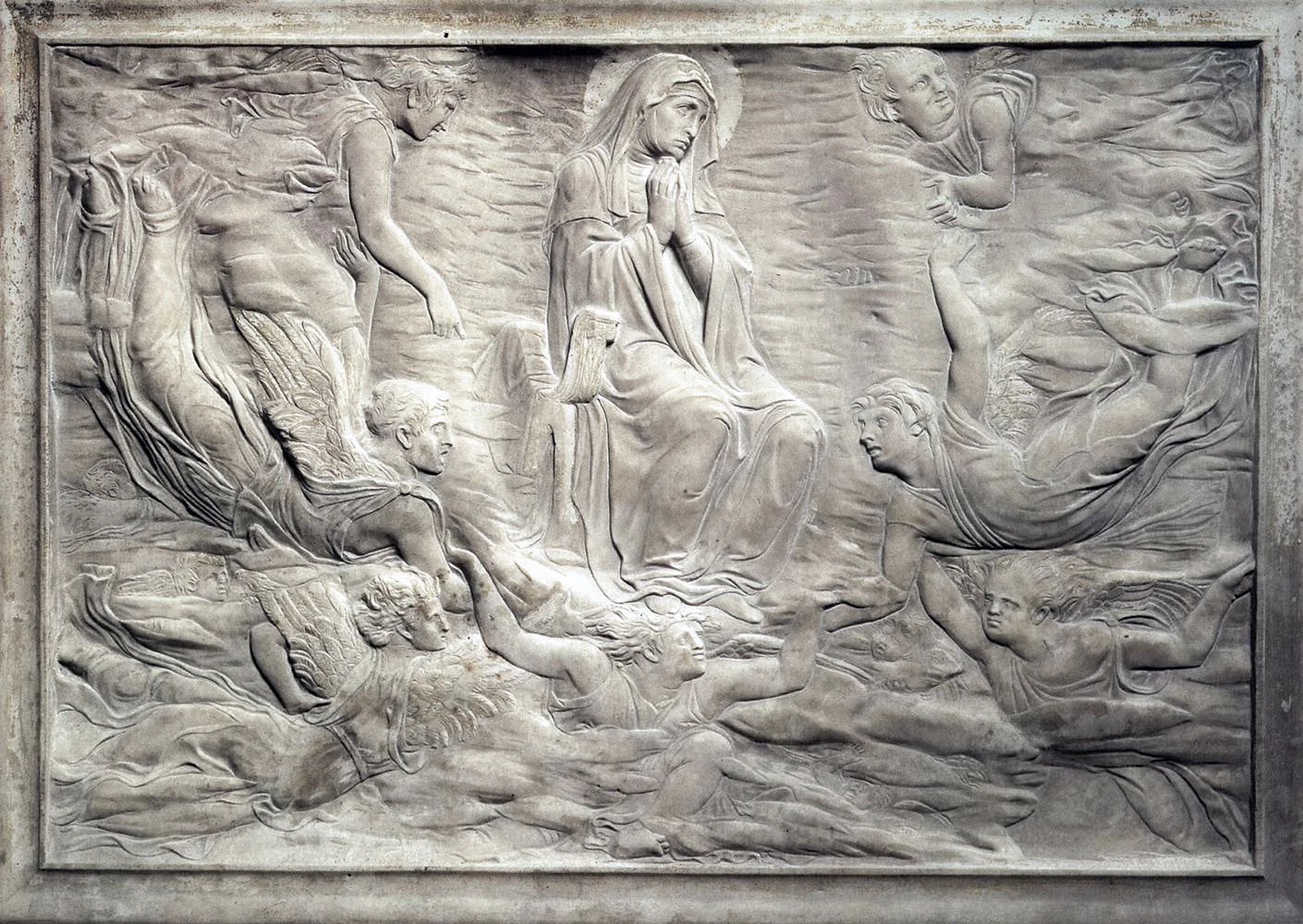
Assumption of the Virgin Donatello, 1427

Delivery of the Keys to St Peter and the Ascension of Christ Donatello, 1425 – 1430
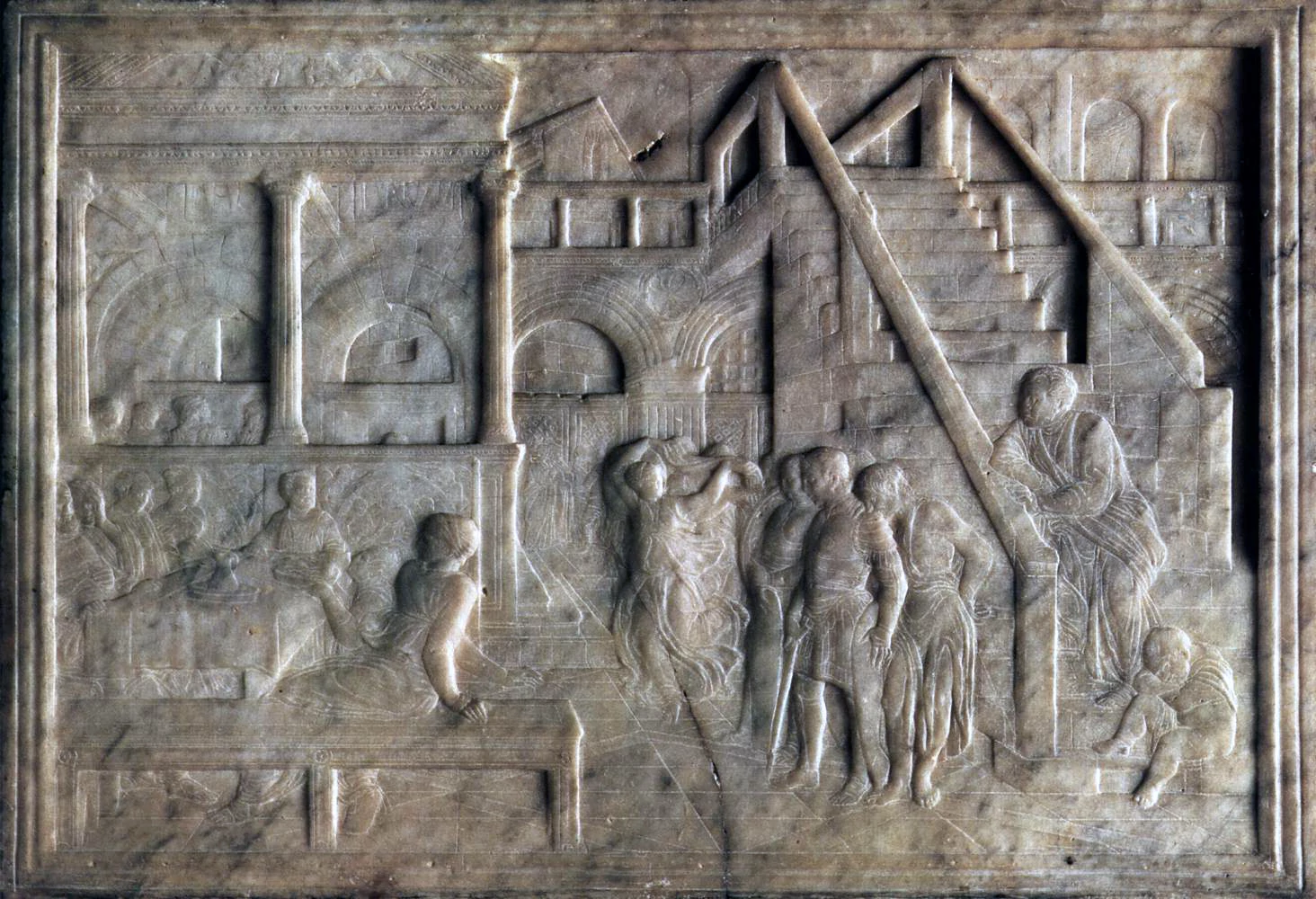
Herod's Banquet Donatello, 1435

Pietà Michelangelo, 1498 – 1499

David Michelangelo, 1501 – 1504

Moses Michelangelo, 1513 – 1515

The Goat Amalthea with the Infant Jupiter and a Faun Gian Lorenzo Bernini, 1615

Ecstasy of Saint Teresa Gian Lorenzo Bernini, 1647 – 1652

Apollo and Daphne Gian Lorenzo Bernini, 1622 – 1655

Psyche Revived by Cupid's Kiss Antonio Canova, 1787 – 1793

Hampstead Heath with Bathers John Constable, 1821

Head of a Vestal Virgin Antonio Canova, 1821 – 1822

Venus Italica Antonio Canova, 1822 – 1823

Reclining Naiad Antonio Canova, 1819 – 1824

Columbus Mary Edmonia Lewis, 1865 – 1867

Forever Free Mary Edmonia Lewis, 1867

Bust of Dr. Dio Lewis Mary Edmonia Lewis, 1868

Hiawatha's Marriage Mary Edmonia Lewis, 1871

Hermione Sarah Bernhardt, 1875

After the Storm Sarah Bernhardt, 1876

Ophelia Sarah Bernhardt, 1880



